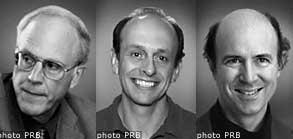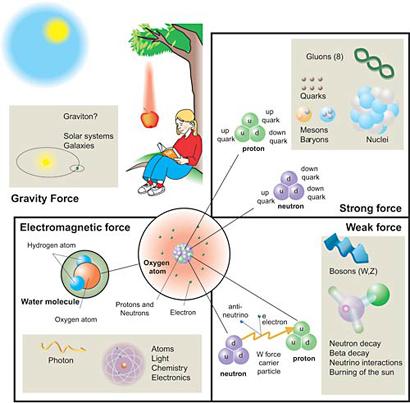Nobel Prize in Physics: the world of quarks closer
The 2004 Nobel Prize in Physics, David Gross, David Politzer and Frank Wilcz, will be received by American researchers. All three have worked on the smallest particles of nature, the quarks. In fact, they discover how quark interaction is.
The work done by the three researchers is not any skill. The jury has stated that it has been fundamental to understand one of the most important forces of nature: strong nuclear force. This force maintains the convergence of quarks into subatomic particles and it was not clear why they do not move away.

Quarks are elementary particles of matter, formed by any object of nature, as well as protons within the nucleus. Despite its abundance, it was difficult to understand the interaction between quarks. In the 1970s David Gross, David Politzer and Frank Wilcz gave a theoretical explanation to this problem: the quarks remain locked in tiny spaces because the force that unites them does not allow them to move away. According to the mathematical calculations of the three researchers, as the distance between quarks increases, the interaction between them also becomes evident. At first it seemed a contradiction, as it was to be expected that interaction in small distances would be easier, but the award-winning researchers pointed out that the opposite: the closer, the freer the quarks are. Therefore, in very close cases the interaction is practically invaluable, they behave as if they were free.
Therefore, the phenomenon was called "asymptotic freedom" and has been a very important step for the oldest project of physics: unifying all kinds of forces of nature in a single system of equations. Five are the basic forces of nature: electric, magnetic, gravitational and weak and violent nuclear force. Each of them influences a certain level of matter. If all forces were unified and expressed with a single system of equations, we could understand nature in a simpler language.
The most obvious thing for us is gravity: planets and galaxies themselves move according to that force and, of course, also the macroscopic objects of our environment. But the other forces are distinguished at the most basic levels of matter. For example, electrical force intervenes in the interaction between electrons and protons within the atom, so it channels reactions between atoms and molecules. The research awarded this year with the Novel has analyzed the forces that manifest at even lower levels, and have been necessary in this project of unification of all kinds of natural forces.
Buletina
Bidali zure helbide elektronikoa eta jaso asteroko buletina zure sarrera-ontzian












